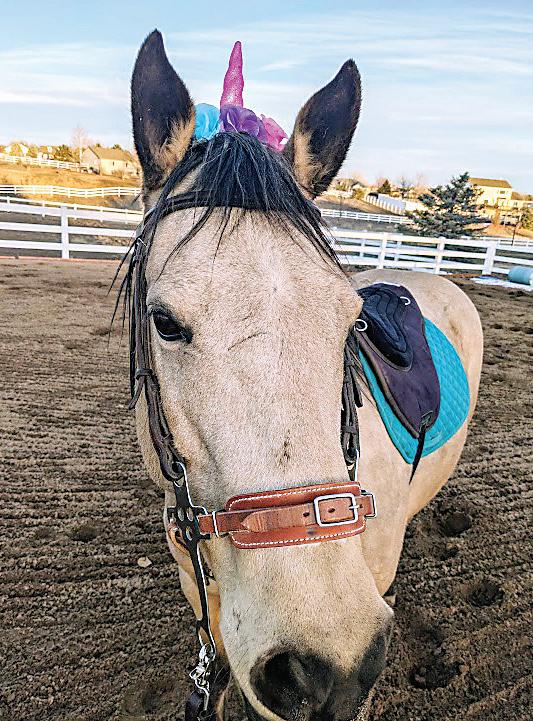
10 minute read
From success to significance to legacy
He worked hard for his whole career, climbed the ladder as he was taught to do, and nally landed in the role that he wanted most, the position he was born to have, he became the CEO of the company. Having experienced plenty of successes along the way, nothing compared to the surge of pride that Brian felt ll his head and heart the day the public announcement was made, Brian CEO.
Having nally reached what he believed was the pinnacle of his career, Brian found himself wondering, “What’s next?” As a 52-year-old CEO, he began to think about the impact he could have on the company he was now leading, the e ect he could have on the people who were now in his care. I remember our conversation as we made our way around the golf course. With each passing hole, we dug deeper into his thoughts, and nally Brian asked me what I thought. e real question he was trying to answer was whether or not he saw this as a huge opportunity to have a signi cant impact on the business and the people or was he already planning for what happens next. At 52, the wheels in his head were spinning fast, so much more to do and so much opportunity in front of him. CEO today, chairman of the board tomorrow. Who knows what the world holds for Brian?

I asked Brian if I could share something I heard Zig Ziglar share with so many of us. Of course, he said yes. Zig, and now his son Tom, speak about the fact that we move through our careers and life in cycles. We
SEE NORTON, P26
TAYLER SHAW
Community Editor tshaw@coloradocommunitymedia.com
ERIN ADDENBROOKE Marketing Consultant eaddenbrooke@coloradocommunitymedia.com

AUDREY BROOKS
Business Manager abrooks@coloradocommunitymedia.com
ERIN FRANKS
Production Manager efranks@coloradocommunitymedia.com
Columnists & Guest Commentaries
Columnist opinions are not necessarily those of the Herald.
We welcome letters to the editor. Please include your full name, address and the best number to reach you by telephone.
Email letters to letters@coloradocommunitymedia.com
Deadline Wed. for the following week’s paper.
PERIODICALS it returned cause was
Why recall is needed
As an Englewood resident, it deeply saddens me to read former Mayor Olson’s letter to the editor — so much is missing that I feel compelled to respond.
To her point that Englewood City Council is doing their job, I, and hundreds of Englewood citizens have lled chambers to standing room only again and again and yet we remain unheard. Clearly, council’s housing agenda does not represent those who spoke hour after hour, and those that reside and pay taxes in Englewood.
She refers to the fact that council “talked with residents.” She was obvi- ously not present the evening Councilmember Anderson leaned back in his chair and told residents that had just expressed their deep concerns regarding council’s direction, that there were four members of Council that were in favor of the proposed direction to rede ne R-1. Period — end of caring about what any of the residents had shared. Deal done. Wow. I haven’t seen that kind of shut-down since grade school when the bully on the playing eld answered “Because I’m bigger that you, that’s why!”

I’m so glad they tape council meetings so that you can hear it for yourselves. Now let’s talk about whether council really did pull the issue o the table he did not believe he hit the actual shooter. when they heard the deep concern of citizens and disagreement on zoning changes.
Not really.
If you continued to spend time listening to study sessions by council, I think I would label it as let’s do an end run around the public, and still upend R-1 zoning. Truth of what is still on the table at council is they are considering allowing two ADUs (accessory dwelling units) in R-1. One in the back yard and one internally — meaning in the basement of a residence. Herein, is the rub. e minute you put a stove into a basement apartment, you just made that residence a duplex. How’s that for a lightning round to destroy R-1 zoning. I’m asking that residents carefully consider that sometimes our tax dollars are well spent on recalls, and this is certainly one of those times. Recalls are no more polarizing than are the deaf ears that those being recalled have extended to Englewood residents.
I do agree with one statement. Let’s do this di erently. is recall is an amazing opportunity to reestablish trust and civility. e greatest livable cities are those with respected government.
Jan McCoy District 3 Englewood

Police arrived on the scene about eight minutes later, where O cer Trey Sammon learned that while Blankenship had shot the gun, he did not directly threaten his mother or brother, but was “drunk,” the DA letter said.
According to the investigation, once police were told the suspect was intoxicated and armed, Englewood o cers Jarrett, Smith, Cameron Cox, Bryce Allen, Sammon, and Sgt. Adam Wright set up a perimeter around the house.
At 7:59 p.m., o cers on the scene told investigators that Allen ordered Blankenship to exit the house with his hands up. About 44 seconds later, the investigation documents say someone inside the home asked for the o cer to identify himself.
For several minutes, Blankenship said he was coming out and needed a minute. By 8:06 p.m., Allen again ordered both Blankenship and Mitchell to exit the home.
According to police accounts, just after 8:07 p.m., a shot was red from a window in front of the home. Investigators say the body camera worn by Wright shows a pu of smoke from the window. In seconds, Smith returned re with a ri e, taking ve shots directly at the front picture window.
Smith, who has served in the department since 1996, is the lead ri e instructor. In interviews with investigators, Smith said he felt the situation was a higher risk and dangerous call since an adult was drunk and had previously red the weapon before o cers arrived on the scene.
Acting as the cover o cer, Smith said he observed a gure dart past the glass, moving south in a crouching position with a second gure moving past in the same position.










After again ordering the men to come out, Smith said one of the men positioned himself toward the o cers and he then heard a loud bang and glass breaking. Smith told investigators after the incident that he thought it was a gunshot and that is why he returned re.
Smith said he stopped ring because he saw another gure and still was not sure who the target was, and e Aurora Police Department
Approximately 18 seconds after the initial shot from the suspect, another gunshot came from the house. Within three seconds, O cer Jarrett red ve shots at the bedroom window, and after warning nearby residents to return to the safety of their homes, he red one more shot into the home.
By 8:08 p.m., Jarrett red two more shots at the window where the suspect was believed to be.
At the time of the shooting, Jarrett had been with the Englewood Police Department for four months.
Concerned the shooter inside the home had a clear shot at o cers outside, Jarrett ordered Allen to move and said he would provide cover. As Allen followed the order, Jarrett red seven more rounds into the upper area of the window. He then red another three shots as he moved to a safer location.
At 8:09 p.m., Blankenship exited the house and was taken into custody. But o cers were still unsure if the home was secure or if there was a second shooter.
At approximately 8:42 p.m., the Englewood Police Department SWAT team entered the house where they found Mitchell dead on the living room oor.

Investigators say video footage, evidence collected and interviews con rm that Smith red ve shots into the house while Jarrett red 18 total shots.
Crime Scene Investigation unit processed the crime scene, with Investigator Angela Gonzales observing a pool of blood in the living room with a Winchester .380 cartridge casing nearby. She also recovered another cartridge case in the bedroom oor where o cer said the second shot came from.
Dr. Casey Britting, an Arapahoe County forensic pathologist, performed the autopsy on Mitchell, noting that he had multiple gunshot wounds. Ultimately, Britting said Mitchell died of a gunshot wound to the chest.
In an interview with police, Blankenship admitted he was the one who shot at police using a .380 handgun. Blankenship said he was the only one to shoot at police, not his brother. However, Smith said he is certain he red his weapon at the person who was shooting at the police. Whether that was Mitchell or Blankenship is not clear according to the nal investigation.
According to the report prepared by
Klingensmith, the investigation was not about proving the criminal case against Blankenship and she solely focused on whether the o cers were justi ed in ring their weapons that night.
BY TAYLER SHAW TSHAW@COLORADOCOMMUNITYMEDIA.COM
When people think of horses, they might associate them with ranch living, horse racing or recreational riding, but horses can be therapeutic, too. erapy takes many forms, from physical to mental. Some people travel to a ranch to work with horses as part of the therapeutic process.
Equine-assisted therapy was something Arvada native Kelsey Petitt discovered while studying occupational therapy at Pima Medical Institute in Denver. Having grown up riding horses, it immediately caught her attention.


“I just, kind of, was like, ‘Oh my gosh, this is the coolest thing ever. I can combine my true passion of horses and really being able to help and assist participants and patients with doing therapy and reaching their functional goals while also having fun with horses and having that relationship,’” Petitt said.
Although she knew immediately that equine-assisted therapy was something she wanted to pursue, she did not do so immediately. Following her schooling and clinical internships, she quickly began working and then had her daughter.
However, in 2021 Petitt, who now lives in Brighton, decided to establish the Brighton-based Prestige erapeutic Equestrian Center, o ering an occupational therapy program that brings the four-legged companions into the practice.
“Now, I’m going on 11 years of being a therapist and so it’s taken me a little bit of time to get back to, really, what I wanted to do,” said Petitt, who also works as an occupational therapy assistant for a company called erapeutic and Rehabilitative Associates. Her purpose, like many other therapists incorporating horses into their practice, is clear: “Transforming lives through the therapeutic power of horses.”
Bringing horses into occupational therapy
Occupational therapists help people develop skills so that they can perform day-to-day tasks such as bathing, dressing and eating, as well as techniques to aid in memory and concentration, according to the American Occupational erapy Association.
For example, occupational therapists may work on a person’s ne motor skills, such as being able to button a jacket or holding a fork, Petitt said.
ey also work on sensory integration, which she said usually comes up when working with someone who is on the autism spectrum.
Another example of work they do is helping someone with their feeding skills, such as for patients with Parkinson’s disease who experience a lot of tremors. Improving core strength may also be a focus for patients, such as for someone who struggles to put their shirt on due to a lack of strength.
“ ere’s an array of di erent settings that you can get into in the occupational therapy eld, but I think for me, the equine-assisted movement is just something that I’ve always loved,” she said. “Horses are just so therapeutic in general, for anybody.” e term “hippotherapy” refers to how occupational therapy, physical therapy and speech-language pathology professionals use equine movement as a therapy tool, according to the American Hippotherapy Association.
To use hippotherapy in treatment, a person must be a licensed therapist who has completed continuing education in the inclusion of horses and equine movement, per the association.
Petitt has gotten her rst level of training with the association, and she plans to continue with her training this fall.
However, Petitt explained that she does not refer to herself as a hippotherapist because hippotherapy is not its own therapy.
“We’re not hippotherapists,” she said. “Hippotherapy is utilizing the horse. All of our treatments are either occupational therapy, speech therapy or physical therapy, and we’re just using the horse as a treatment tool, basically.” ere are di erent planes for the horse in the way that their pelvis moves — the sagittal plane, frontal plane and transverse plane, she said.
With her clients, she said she is working on all of the same therapy interventions that she would be in a therapy gym or in an outpatient program, but instead she’s now doing it by having her clients get onto a horse and incorporating the horse’s movement into the treatment.
“We work o the horse’s pelvis, so their pelvis is very similar to ours,” she said.
“We’re working on that constantly, so when we have our riders on the horse, they’re also working on that. And it’s one of the most multi-dimensional movement(s) that’s rhythmic and repetitive,” she said.
For someone experiencing conditions such as limited mobility, limited core strength, cognitive delays, or sensory processing disorders, “it can really just kind of help bene t and improve all of those elements,” she said of equine-assisted therapy.
According to a study published in the international journal, Physiotherapy eory and Practice, there are “signicant positive e ects” of equine-assisted therapy on exercise tolerance, mobility, interpersonal interactions and quality of life of people with disabilities.
Another study focused on the ef- fects of equine-assisted activities and therapies for individuals on the autism spectrum and concluded that these programs “substantially improve” the social and behavioral functions of people who are on the autism spectrum.

“Communication is pretty key, too … because horses mirror us, so a lot of our participants can learn a lot more speech and communication successfully with the horses, which is really great,” she said.
Petitt has three horses she works with. e horse a client is paired with is dependent on their individual needs, she explained.
“Part of what’s so cool is because we can kind of tailor it to that participant, that patient, and kind of really work on what we need to work on with them,” she said. “ eir postural control, sensory systems, motor planning.”
In a typical therapy gym for occupational therapy, Petitt said there are tools such as a swing, a ball and a mat to use for the session. However, these do not provide the same level of sensory input and rhythmic, consistent movement that equine-assisted therapy can, which she said is great at building overall strength, control and balance.
“We can work in the therapy gym all day but the bene ts and the outcomes that we’re seeing while doing therapy










